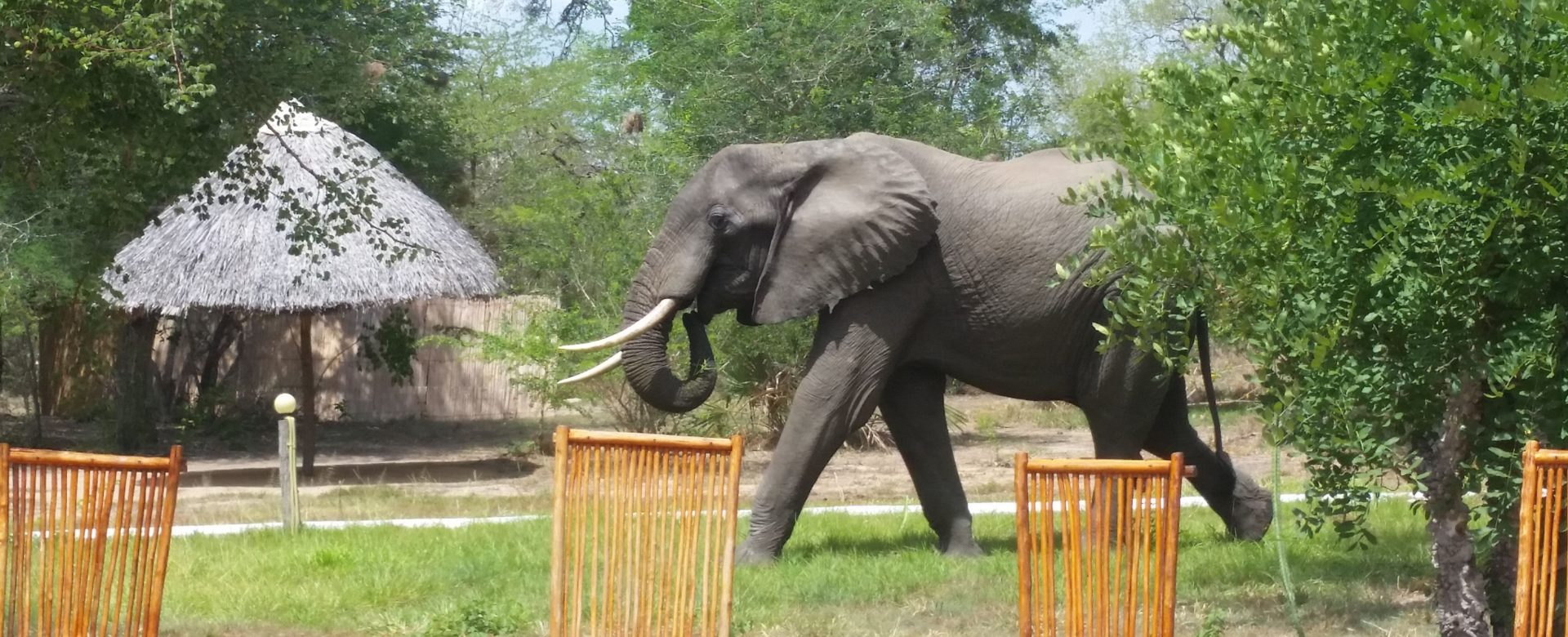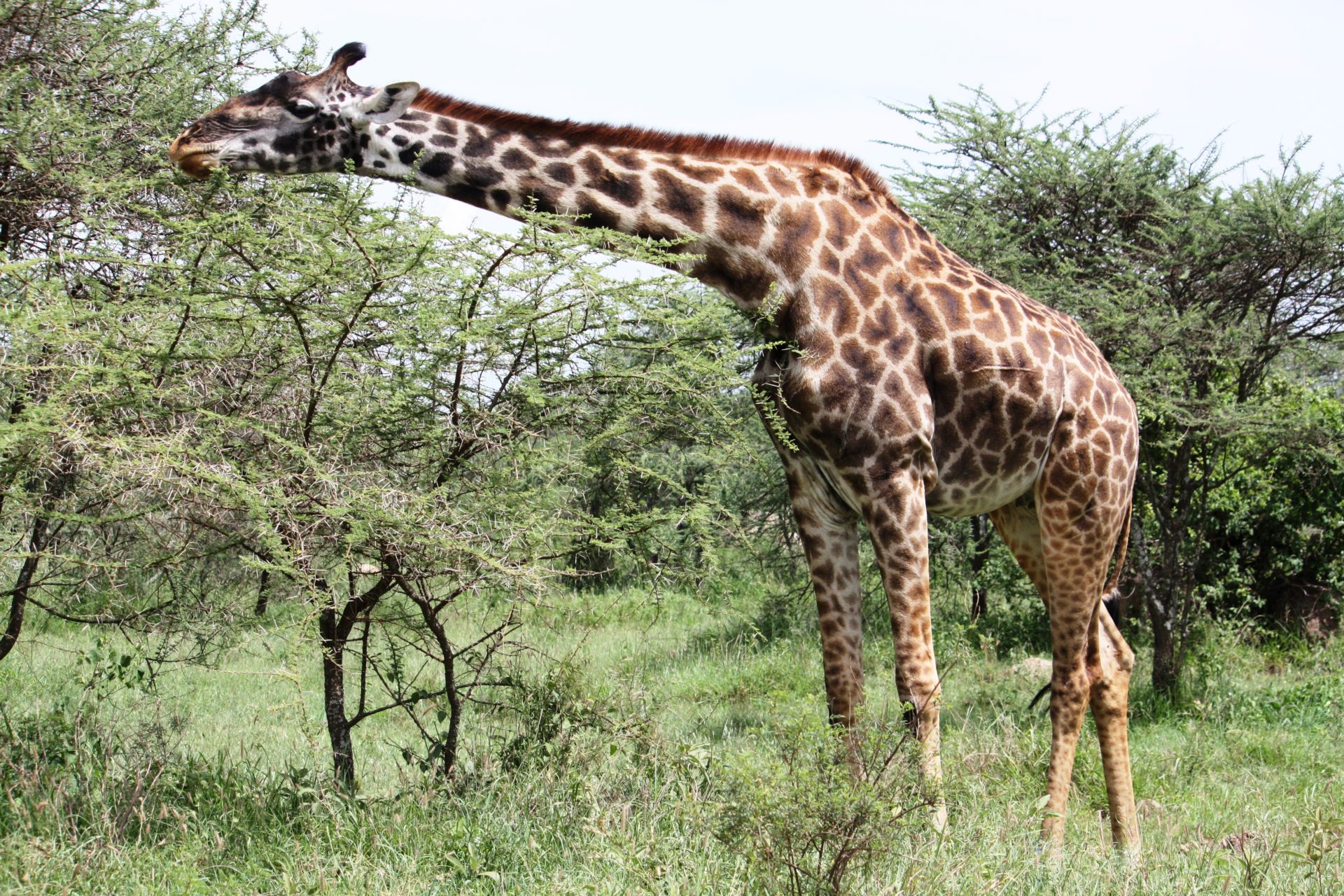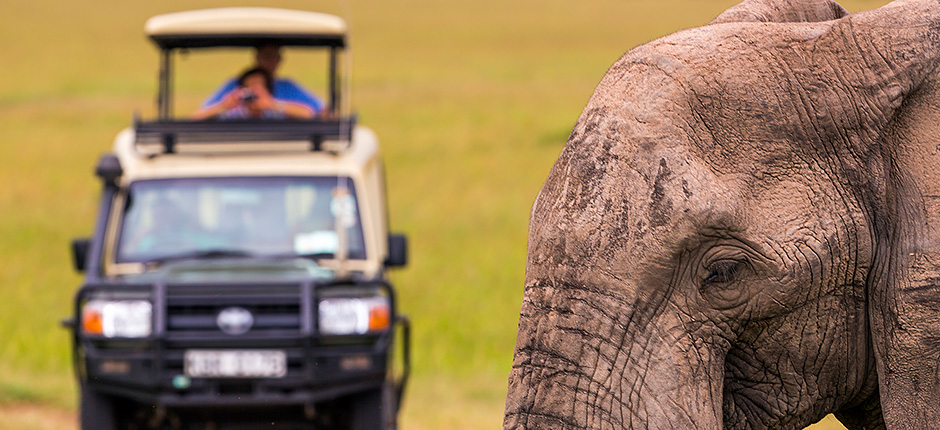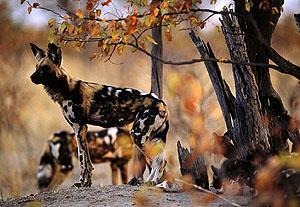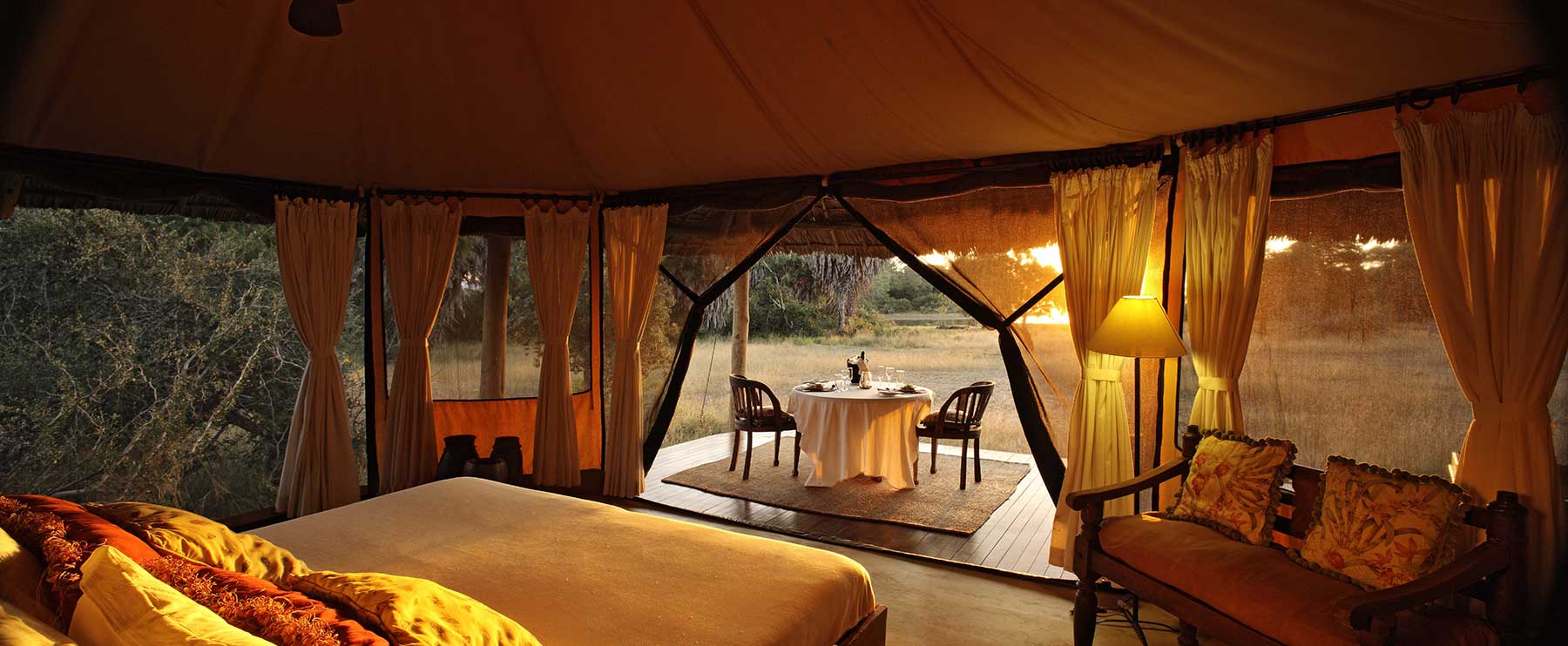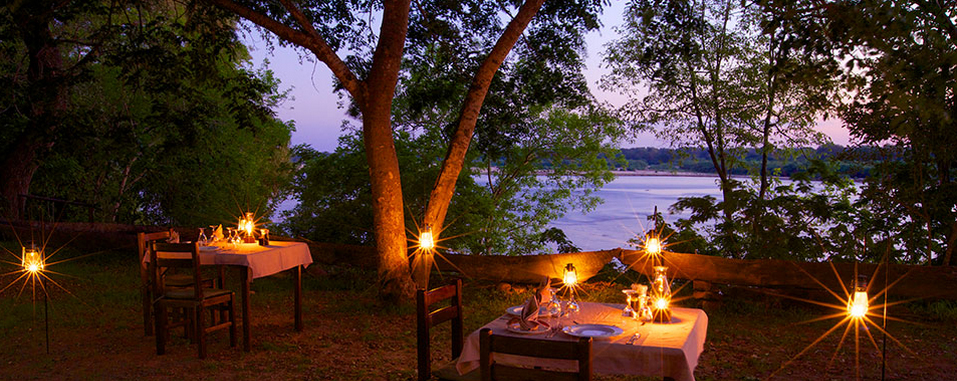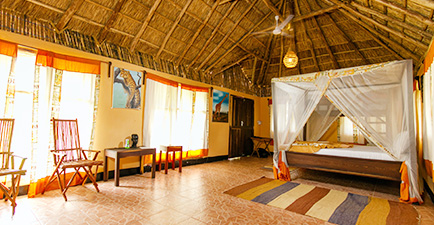Nyerere National Park
Nyerere National Park in southern Tanzania is Africa's largest national park, more than twice the size of Serengeti. However, the truth is that the Nyerere National Park wilderness is even bigger because it is adjacent to the vast Selous Game Reserve and Mikumi National Park and several smaller reserves and so-called "game-controlled areas". Nyerere National Park is a piece of Africa preserved from ancient times. Here the paved roads end and the wilderness begins.
Highlights of Nyerere National Park
Bush walk
In Nyerere National Park, unlike many safari parks in Tanzania, you can do bush walks, safaris on foot. With an armed guide you can walk out into the wild to see flowers, footprints of lions and if you are very lucky spot elephants.
Boat safari
Hop on a small boat a cruise slowly along East Africa's largest river; Rufiji River, with great chances of seeing crocodile, hippo, many different species of birds and large mammals like elephants and buffaloes drinking in the river.
Lions
Home to an estimated 7 500 lions. Nyerere National Park and the adjacent Selous Game Reserve, has the largest lion population of any park in Africa and you have great chances of seeing them in the wild.
African wild dogs
The African wild dog is very hard to spot in northern Tanzania all though they spotted on rare occasions in northern Serengeti. In Nyerere National Park you are likely to see them as they still are found in large numbers here.
Vast wilderness
Nyerere National Park is twice the size of Serengeti, with less tourists. In SNyerere National Park you will see less safari jeeps and tourists which will reall ygive you the feeling that you are in a vast wilderness
Giraffes
Nyerere National Park is sometimes called Giraffic Park in Tanzania. The reason for this is obvious; giraffes are ridiculously common in the park.
Wildlife and nature
The Rufiji River’s lagoons, sandbanks and lakes, the surrounding forest, the bush, the acacia-overgrown hills and the savannah that make up Nyerere National Park create a unique and unusual safari environment. Large parts of the reserve are made up of swamps, which are very difficult to access. This creates an environment where many of the animals live almost completely without human influence.
Some of the animal species typical of the African savannah, like Elephants, hippos and crocodiles are found here in greater numbers than anywhere else in Africa. Nyerere National Park is situated in the border country between the bush vegetation of southern Africa and the savannah of East Africa and the wildlife offers a fantastic range of species. Species typical of both areas are found in Selous, and this is perhaps primarily what makes the park unique. The park is home to 440 known bird species, 800,000 mammals of which over 110,000 buffaloes. In Nyerere National Park and the adjacent Selous Game Reserve, there are an estimated 40,000 to 50,000 elephants, an estimated 7,500 lions, many wild cats and leopards. Lions are often seen in Selous; however, the other cats are shy and difficult to see. The only large cat not found in Nyerere National Park is cheetah.
Perhaps even more interesting for a true safari lover is that Nyerere National Park is home to 1,300 wild dogs, probably the largest surviving population in the world. Wild dogs have long been seen as a pest and therefore hunted mercilessly. However, you who are lucky enough to see them will soon see that this is a predator and herd animal that is as exciting and interesting as the big cats. Giraffes are also found in large numbers in Nyerere National Park, in Dar Es Salaam Selous is sometimes called Giraffic Park.
The Rufiji River, with its tributaries and large delta, attracts herds of elephants and is home to large populations of hippos and crocodiles. The river also attracts large herds of terrestrial herbivores. Especially during the dry season when it is difficult to find water on the plains, the animals are attracted to the river. During and just after the rainy periods, they drink in the many waterholes out on the plain to reduce the risk of being prey to the predators down by the river.
The landscape of Nyerere National Park is varied with green grass and bushy vegetation in some areas. Along the shoreline grows the characteristic Borassus Palm tree which can still grow up to 25 meters high. The landscape and wildlife will inspire many photographs, so we recommend that you have a large memory card in the camera.
Climate
Unlike the big parks in northern Tanzania; Serengeti, Ngorongoro, Tarangire and Lake Manyara, Nyerere National Park is not located on the East African highland but at low altitude. This means that the climate is different than in for instance Serengeti and much more similar to the climate of Dar Es Salaam and Zanzibar. In principle, all year round the weather is warm and humid, the warmest months are December to March and the coolest June to August. Unlike the high-lying areas, Nyerere National Park does not have cold nights either, but year-round hot or warm nights. The rainy season is mid-November to mid-December, the short rains, and March to May, the long rains. However, rain showers can occur at all times of the year.
Best time to visit Nyerere NP
The season for safaris in Nyerere National Park is from June until February. The best season is from July until beginning on November. This is the driest season and the animals gather around the lakes and the Rufiji River as the small water holes go dry. This is a superb time of the year in Nyerere National Park. In the efternoons you can from a boat see elephants, buffaloes and even lions drinking from the river.
How to get to Nyerere NP
Nyerere National Park can be reached by car from Dar Es Salaam. The drive is quite long, at least 6 to 7 hours, and partly the road is bad. It has been said that the road is to be improved and tarmacked all the way to the park, but we do not know when this will be finished. It is also possible to fly to Nyerere National Park, there are direct flights from both Zanzibar and Dar Es Salaam. There are several airstrips in the park and sometimes you will go down on one or two to drop people off before you get to your airstrip. Therefore, the flying time from Dar Es Salaam and Zanzibar can vary from 45 minutes to 1,5 hours.
Safari to Nyerere NP
Nyerere National Park (and previously Selous Game Reserve) is for many visitors a single safari destination. Many flies in from Dar Es Salaam or Zanzibar for a 2–4 nights safari and then fly back to Zanzibar or Dar Es Salaam to enjoy the beach. Nyerere National Park can also be combined with for instance Mikumi National Park. This combination is good is you drive to the parks with a private jeep and private guide. It is also popular to combine Nyerere National Park with Ruaha. This is best done as a fly in safari due to the great distances between parks. If you want to see great parts of Tanzania it is possible to drive. If you start with Nyerere and then go on to Ruaha we would recommend that you either make it a two days drive to go back to Dar Es Salaam or, if possible, that you fly back.
Lodges in Nyerere National Park
Siwandu Camp
A high end exclusive tented camp with a great location by Lake Nzerakera. This is one of the parks best tented camps if you are looking for a combination of luxury, intimacy and great game viewing.
Africa Safari Camp
Africa Safari Camp is a rustic. No thrills, mid-range camp located just outside the borders of the national park. The camp is a great value for money mid-range camp for those who value a great safari but do not wish to spend a fortune on it. The lodge has tented rooms and bandas. It has a pool and it is great for families.
Rufiji River Camp
Rufiji River Camp is one of the oldest camps in the park and therefore sits on one of the best locations, right at a bend in the great Rufiji River. The camp is in the upper mid-range segment. It has specious tents, a big common area, a swimming pool and great views of the river with game viewing from the lodge.

